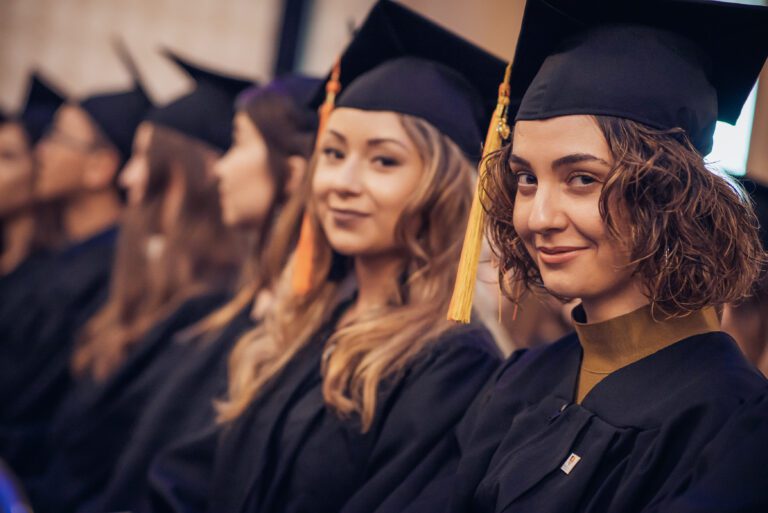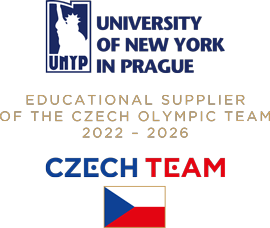What Are “Academic Literacies” and Why Should I Care?

Over the past few decades, English-medium universities like UNYP have admitted increasingly diverse groups of students, many of whom speak English as an additional language (Lea & Street, 2010; Thesen, 1997). The transition from high school to university is often challenging, even for students studying in their primary languages (Clerehan, 2002). For students who are studying in an additional language whilst simultaneously navigating diverse cultural practices and experiences in their new environment, adopting the academic conventions and developing the skills required for success can be even trickier (Bitchener & Basturkmen, 2006; Latif, 2012; Lou & Noels, 2020). Perhaps you have been surprised (even frustrated?) by how different the American style of writing is to that of your home country. These are often very real differences, described as contrastive rhetoric (Hyland, 2006). Of course, just having a fancy name for what you are struggling with does not make it any easier.
However, the good news is that these expanding shifts in student body demographics have sparked an expanding area of research around how best to ensure that you develop what are referred to as the academic literacy skills, or academic literacies, that you need to succeed at university (Lea & Street, 1998). These include the reading and writing practices through which you are required to understand and demonstrate knowledge (Lea & Street, 1998; Nambiar, 2007). It has become increasingly apparent that these are not “one size fits all” skillsets. Different disciplines often have different expectations when it comes to how you structure an argument, how cautious you should be in making a claim, and what sort of vocabulary is desirable or appropriate (Lea & Street, 2010). In fact, research on academic literacies has demonstrated that expectations can vary significantly even at the micro level, that is, between different instructors (Lea & Street, 2010). This suggests that, while the tendency has been to claim that student standards are in decline (Lea & Street, 1998), lower assessment scores can sometimes simply reflect a lack of exposure to the desired academic literacies in a given context (Kaufman and Kozulin, 1998, as cited by Leung, 2007) The focus is now on analyzing university courses, materials, and assessments, and using this data to set explicit goals and expectations and to help students connect to the materials in more personalized ways.
Many educator-researchers have been innovative in their approaches to this task. Fiona English (2015), for example, centred a writing course around regenring. She asked students to rework an existing essay in another genre, for example as a radio show or a newspaper article. Students thus had the chance to approach familiar content from a different viewpoint. This, English claims, had a significant impact on their knowledge and understanding.
Any student at UNYP who has taken my English Composition I course knows that I love memes. They are included in most of my presentations, and quickly became a shorthand in many student presentations and in our email communication (which I always stress is appropriate for me, but not for every class. This has often proven a great way to start a discussion about audience awareness in our writing). When I was undertaking my MA in Applied Linguistics, I started looking back over my presentations, the students’ presentations, and our email communication. At this point, it occurred to me that students were sometimes expressing pretty complex ideas through the memes they chose, and I realized I could use memes in a more directed way to help them connect their own experiences and literacies to academic writing skills. I conducted a research project on this, making sample materials. I then went on to present these ideas at three different conferences because, guess what? There are so many other lecturers trying their very hardest to find fun, interesting, and relatable ways to develop your academic literacies. My work on memes in English for Academic Purposes (EAP) has met with a lot of enthusiasm and was recently used by a PhD candidate in France who was teaching her own EAP courses. Many EAP instructors around the world are working diligently to make their universities a more level playing field by unpicking the complex issues around academic literacies.
And why should you care about academic literacies? Well, in the short term, it may provide a framework which helps you navigate discussions with your lecturers if you find yourself getting the same feedback over and over on your coursework. Ask them for a meeting. Tell them, for example, that you were specifically taught to make your arguments less explicit or to avoid writing persuasively as a sign of respect (Draft, 2019). Help them to understand (as much as you do yourself, at least) what exactly you are finding confusing and why. Encourage them to offer you examples from previous student assignments, if they can, and to explain exactly why these essays obtained a good grade. What’s more, try to help your lecturers recognize the literacy skills you do have – these may well be different to their own. Maybe you can knock together a killer TikTok in 10 minutes. How did you know what your audience would want to see? How did you keep the main point of your video concise? These are skills you can use in academic writing!
In the long term, initiating these types of dialogues may help us (your educators) to be more aware of why students from different cultural backgrounds might struggle with different types of assignment. This could impact how we approach planning and delivering our classes, so you may be starting a conversation which helps future generations of UNYP students. For my own part, I will keep working hard to listen to students, to follow and initiate innovative academic literacies research and, of course, to Google lots of memes.
(Adapted from coursework for MA Applied Linguistics, University of Essex, UK)
References
Bitchener, J., & Basturkmen, H. (2006). Perceptions of the difficulties of postgraduate L2 thesis students writing the discussion section. Journal of English for Academic Purposes, 5, 4-18.
Clerehan, R. (2002). Transition to tertiary education in the arts and humanities: Some academic initiatives from Australia. Arts & Humanities in Higher Education, 2(1), 72-89.
English, F. (2015). Genre as a pedagogical resource at university. In Lillis, T., Harrington, K., Lea, M. R., & Mitchell, S. (Eds), Working with academic literacies: Case studies towards transformative practice. pp. 245-255 The WAC Clearinghouse/Parlor Press.
Hyland, K. (2006). English for Academic Purposes: An advanced resource book. Routledge.
Latif, M. M. (2012). Sources of L2 writing apprehension: A study of Egyptian university students. Journal of Research in Reading, 38(2), 194-212.
Lea, M. R., & Street, B. V. (1998). Student writing in higher education: An academic literacies approach. Studies in Higher Education, 23(2), 157-170
Lea, M. R., & Street, B. (2010). The “academic literacies” model: Theory and applications. Theory into Practice, 45(4), 368-377.
Leung, C. (2007). Dynamic assessment: Assessment for and as teaching? Language Assessment Quarterly, 4(3), 257-278. https://doi.org/10.1080/15434300701481127
Lou, N. M., & Noels, K. A. (2020). Breaking the vicious cycle of language anxiety: Growth language mindsets improve lower-competence ESL students’ intercultural interactions. Contemporary Educational Psychology, 61, 1-17.
Thesen, L. (1997). Voices, discourse, and transition: In search of new categories in EAP. TESOL Quarterly, 31(3), Language and Identity, 487-511.

Emily Downes
Related Articles
UNYP Chronicle Newsletter
The e-mail address you provide will be used only to send you the newsletter. Your privacy is important to us.
For more information download our UNYP Brochure.

Contacts
University of New York in Prague
Londýnská 41, 120 00 Praha
ID no: 25676598
Phone:
+420 224 221 261
![]() Skype
Skype
Email: unyp@unyp.cz







